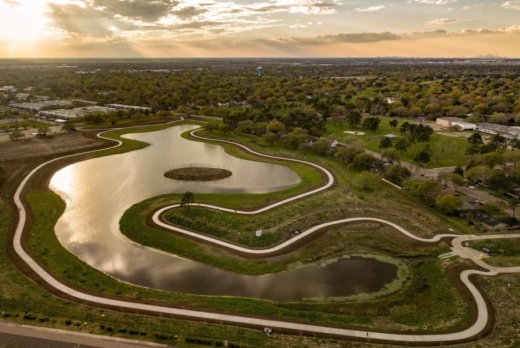The environmental policy organization connects people to geographically-defined ecosystems across eight counties in Greater Houston—including Brazoria, Harris and Galveston counties—and spurs action through large-scale environmental policy initiatives, including tree plantings. Houston Wilderness is coordinating five large-scale tree plantings over the next three months.
Tree plantings provide various services to an ecosystem, including increased air and water quality, carbon sequestration for large industrial and residential areas and habitat creation for migratory species, Houston Wilderness officials said.
Protecting and preserving land, restoring ecosystems and putting carbon back into the soil are three key areas affecting climate change in the region, Houston Wilderness CEO Deborah January-Bevers. As more trees are planted, more carbon is sequestered, which is in accordance with Gulf Houston Regional Conservation Plan: The plan’s third goal calls for an annual 4% increase in organic carbon absorption to benefit air quality and help reduce urban heat spikes.
“In our region, we recognize that trees are one of our biggest assets,” January-Bevers said. “Now, because of the science out there, we can take it a step further.”
Some locations around greater Houston and the Bay Area experience an urban heat island effect, and those areas are the highest priority when it comes to tree plantings, January-Bevers said. Areas experiencing greater soil erosion are also some of the first places where trees are being planted, she added.
Urban heat islands, according to the Environmental Protection Agency, occur when metropolitan areas experience higher temperatures than outlying areas because of structures, such as buildings and roads, that absorb and re-emit the sun’s heat more than do natural landscapes, such as forests and water bodies.
Daytime temperatures in areas affected by this phenomenon are anywhere from one to seven degrees Fahrenheit higher than temperatures in outlying areas, and nighttime temperatures are anywhere from two to five degrees higher, per the EPA.
To help mitigate the effects of urban heat islands, the Houston Wilderness team worked with experts at Rice University to analyze Houston’s native trees and their properties in three categories: water absorption, carbon absorption and ability to filter greenhouse gases. Gathering this data allowed the environmental policy organization to select about a dozen “supertrees” to be planted in areas where they can have the most environmental impact.
“They not only can do a lot with their roots, both for water and for carbon, but the leaves serve a very important role in air pollution absorption,” January-Bevers said. “Luckily, those trees are trees that you see a lot.”
All oak trees, for example, rank high on the scale, particularly live oaks, willow oaks and laurel oaks. League City’s legacy of live oak trees dates back to the 1870s, according to the League City Historical Society.
Houston Wilderness volunteers and staff recently focused on a section of the Bayport Terminal near Pasadena and La Porte, where they planted total of 1,500 trees in the area in late November. The organization hopes to plant another 1,000 in the same area before the end of 2020 and to continue planting into winter 2021.
Aside from tree planting, the group also advocates for the sustainable re-use of land throughout the region; officials pointed Exploration Green in Clear Lake as an example. Three former golf courses throughout Houston are being converted to large stormwater detention basins with nature-based stabilization techniques, very similar to Exploration Green, Houston Wilderness officials said.
“That's a primary example of, really, all three of the goals of the regional conservation plan,” January-Bevers said, adding that many of the trees being planted on the conservancy are supertrees. “[This is] exactly what we need to be doing all over the region.”
Houston Wilderness partners with nonprofit organizations, such as Galveston Bay Foundation, as well as with individual municipalities, including the cities of League City and Friendswood. These partnerships are facilitated in conjunction with the city of Houston’s Resilient Houston Plan, which is projected to bring 4.6 million native trees to the region by 2030, according to a city news release.
League City’s parks department, in particular, has taken steps in the right direction, January-Bevers said.
“They are acutely aware, I think, of what needs to be done there,” she said.





